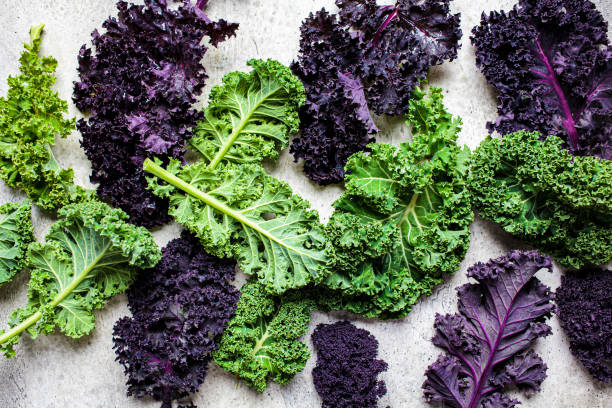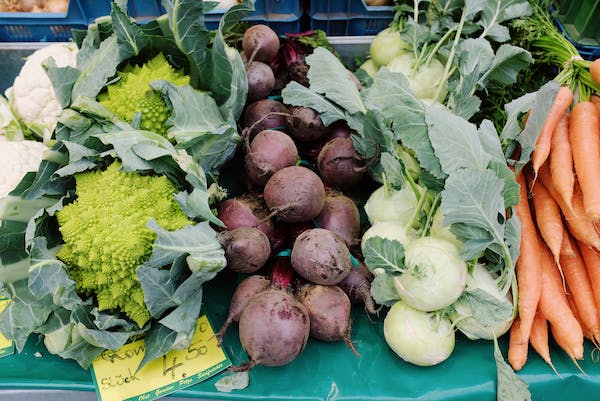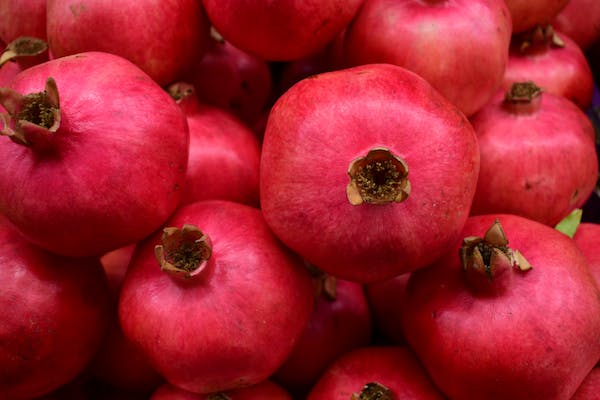Overview
-
Kale is a nutrient-packed leafy green vegetable with multiple health benefits. It supports immune function, fights cancer, aids digestion, improves vision, helps manage diabetes and weight, and lowers cholesterol.
-
Different types of kale: Curly Kale, Lacinato Kale, Red Russian Kale, Redbor Kale, Siberian Kale, Ornamental Kale

Kale, the leaf cabbage, scientifically known as Brassica oleracea and otherwise known as the “king of greens,” a significant vegetable of all time because of its cherished health benefits and nutritional value.
Compressed and coupled with an impressive diverse vitamins, minerals, and antioxidants, kale has become a staple in many healthy diets.
This article explores the top health and nutritional benefits of kale and also how to add it into your diet, and why some individuals may need to avoid eating too much of it.
Health benefits of Kale
Kale boasts an impressive nutritional healthy profile, packed with fiber, calcium, antioxidants, vitamins C and vitamin K, iron, and many more essential nutrients. Kale valuable components work together to offer a multitude of health benefits, aiding in the prevention of various health issues.
1. Nutrient Powerhouse
Kale is a veritable nutritional powerhouse, composed of essential vitamins, minerals, and antioxidants. It is high in vitamin A, vitamin C, and vitamin K, all of which play healthy and beneficial roles in immune protection and functionality, collagen formation, and blood coagulation, aside from these,
Kale is also an ancient source of minerals which may includes calcium, potassium, magnesium, and iron, they are vital for maintaining strong and healthy bones, optimum blood pressure levels, and adequate oxygen flow.
2. Anti-Cancer
Kale offers potential health benefits in the fight against cancer. Heterocyclic amines can be kept out of the body by eating kale and other chlorophyll-rich green foods.
When humans grill meals originating from animals at a high temperature, certain compounds are produced.
They have been connected to cancer by experts. Kale is packed with antioxidants, including vitamin C and beta-carotene, which tends to help in neutralizing harmful free radicals that can damage cells and contribute to cancer development.
Adding to these kale’s anti-inflammatory properties and sulfur-containing compounds support a healthy immune system and help create an environment less favorable for cancer growth.
As part of the cruciferous vegetable family, kale contains compounds that have shown promise in inhibiting cancer cell growth.
3. Digestive Health Promotion
Kale’s fiber content supports a healthy digestive system by aiding in regular bowel movements, preventing constipation, and maintaining gut health.
The combination of soluble and insoluble fiber found in kale provides nourishment for beneficial gut bacteria, promoting a balanced microbiome and supporting overall digestive function.
4. Vision health
Kale contains vitamins A, lutein, and zeaxanthin, which support eye health and guard against cataracts and age-related macular degeneration.
These vitamins and minerals support healthy eyesight and vision function by protecting the retina from damage and filtering harmful blue light.
5. Diabetes
In combating against diabetes, kale offers significant health advantages because of its high fiber content and low glycemic index, kale helps control blood sugar levels and enhance insulin sensitivity.
The chance of a quick rise in blood sugar is avoided by the present fiber in kale, which slows down digestion and the release of the needed glucose into the circulation.
Kale also contains a lot of antioxidants, like vitamin C and beta-carotene, which combat deterioration and inflammation, both of these two chronic diseases are usually linked with diabetes.
A garnished and well-rounded, healthful diet that includes kale may help people control their blood sugar levels and maybe reduce their chance of developing type 2 diabetes.
6. Weight management
Kale might be a useful addition to your diet if you’re trying to manage your weight. It is a great option for anyone trying to lose weight or keep their weight within healthy range because it is low in calories but rich in volume.
The fiber in kale helps with digestion and encourages fullness, which helps prevent overeating. Its high nutritional content guarantees that you get all the vitamins and minerals you need while limiting your calorie consumption.
7. Lower cholesterol levels
Kale offers notable health benefits, with the inclusion of potential to lower cholesterol levels. Kale can support a healthy cholesterol profile due to its high fiber content and distinctive nutritional combination.
In the digestive system, the soluble fiber in kale binds to cholesterol, reducing bloodstream absorption and aiding removal from the body.
Plant sterols and other substances found in kale have been demonstrated to prevent the absorption of cholesterol.
Individuals may see a drop in LDL (bad) cholesterol levels by using kale in a balanced diet, improving heart health and lowering the risk of cardiovascular disease.
Types of Kale
Curly Kale
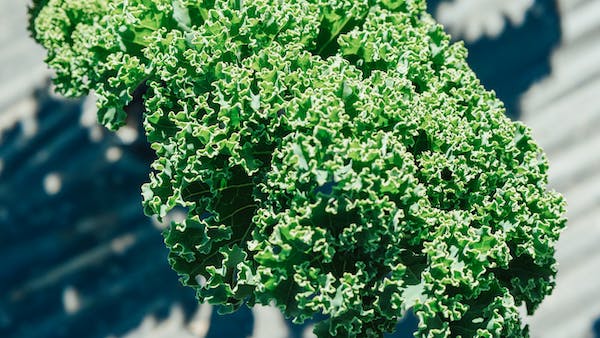
The most well-known variation is probably curly kale, which has tightly ruffled leaves and a vivid green color.
Its firm texture and somewhat bitter flavor make it perfect for sautéing, adding to soups, or used as a filling salad basis. Even after being cooked, curly kale maintains its crisp, giving it a pleasing crunch.
Lacinato Kale (Dinosaur Kale)
Lacinato kale has dark blue-green leaves and is also referred to as dinosaur kale because of its rough, reptile-like feel. In comparison to curly kale, its taste is softer and slightly sweeter.
Lacinato kale retains its flavor well after being cooked, making it a popular ingredient for braising, stir-frying, or blending into filling smoothies.
Red Russian Kale
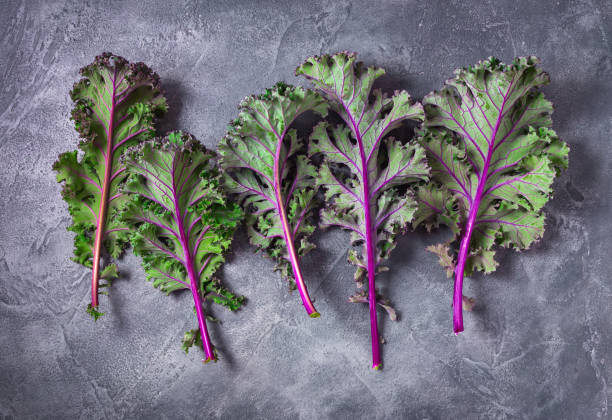
Red Russian kale stands out with its striking reddish-purple stems and frilly leaves. It boasts a tender texture and a delicate, slightly sweet flavor.
Red Russian kale is excellent for salads, lightly sautéing, or adding to soups and stews. Its vibrant color adds visual appeal to dishes.
Redbor Kale
Redbor kale, as the name suggests, showcases deep purple or reddish leaves. This ornamental variety is not only visually appealing but also packed with nutrients.
Redbor kale has a milder taste compared to other varieties, making it a versatile option for both raw and cooked preparations.
Siberian Kale
Siberian kale, also known as Russian kale, offers a hardy and resilient choice. It features flat, blue-green leaves and a slightly sweeter taste compared to curly kale.
Siberian kale is often used in traditional Russian and Eastern European dishes, such as soups, stews, and braised dishes.
Ornamental Kale
While primarily grown for its decorative appeal, ornamental kale is edible and can be enjoyed as part of a meal.
Ornamental kale offers an aesthetic touch to salads, garnishes, or as an eye-catching centerpiece in vegetable platters because to its brilliant hues, which include pink, white, and purple.
Nutrition of kale
At just 33 calories kale, 100 grams will :
-
8.75 calories
-
0.73 gram protein
-
1.02 grams fiber
5 Best Kale Recipes
1. Kale Salad with Lemon Vinaigrette
Ingredients
-
1 lemon, juiced
-
1 garlic clove, minced
-
4 cups chopped kale leaves
-
2 tablespoons extra virgin olive oil
-
Salt and pepper to taste
-
Optional toppings: cherry tomatoes, sliced almonds, grated Parmesan cheese
Instructions
-
In a large bowl, combine the kale, lemon juice, olive oil, garlic, salt, and pepper.
-
For a few minutes, gently massage the kale with your hands to soften the leaves and infuse them with flavor.
-
Let the salad sit for about 10 minutes to allow the flavors to meld.
-
Add your desired toppings, such as cherry tomatoes, sliced almonds, and grated Parmesan cheese. Although not a must.
-
Toss everything together and serve.
2. Sautéed Kale with Garlic and Red Pepper Flakes
Ingredients
-
1 bunch of kale, stems removed and leaves chopped
-
2 tablespoons olive oil
-
3 garlic cloves, minced
-
½ teaspoon red pepper flakes (adjust to taste)
-
Salt and pepper to taste
-
Lemon wedges (optional, for serving)
Instructions
-
Heat olive oil in a large skillet over medium heat.
-
Add minced garlic and red pepper flakes to the skillet and sauté for about 1 minute until fragrant.
-
Add the chopped kale to the skillet and season with salt and pepper.
-
Sauté the kale for 5-7 minutes until wilted but still vibrant green.
-
Remove from heat and squeeze lemon juice over the kale if desired.
-
Serve as a side dish or as a topping for grains or protein.
3. Kale and White Bean Soup
Ingredients
-
1 tablespoon olive oil
-
1 onion, diced
-
2 carrots, diced
-
2 celery stalks, diced
-
3 garlic cloves, minced
-
4 cups vegetable or chicken broth
-
1 can white beans, drained and rinsed
-
1 bunch kale, stems removed and leaves chopped
-
1 teaspoon dried thyme
-
Salt and pepper to taste
Instructions
-
Heat olive oil in a large pot over medium heat.
-
Add diced onion, carrots, and celery to the pot and sauté until softened.
-
Add minced garlic and sauté for an additional minute.
-
Pour in the broth and bring to a boil.
-
Add white beans, chopped kale, dried thyme, salt, and pepper to the pot.
-
Reduce heat and let the soup simmer for about 15-20 minutes until the kale is tender.
-
Adjust seasonings to taste and serve hot.
4. Kale and Quinoa Stuffed Peppers
Ingredients
-
4 bell peppers (any color), tops removed and seeds removed
-
1 cup cooked quinoa
-
1 bunch kale, stems removed and leaves chopped
-
1 small onion, diced
-
2 garlic cloves, minced
-
1 tablespoon olive oil
-
½ teaspoon dried oregano
-
Salt and pepper to taste
-
Optional toppings: shredded cheese, chopped fresh herbs
Instructions
-
Preheat the oven to 375°F (190°C).
-
In a large skillet, heat olive oil over medium heat.
-
Add diced onion and minced garlic to the skillet and sauté until translucent.
-
Add chopped kale to the skillet and cook until wilted.
-
Stir in cooked quinoa, dried oregano, salt, and pepper. Mix well to combine.
-
Stuff the mixture into the hollowed-out bell peppers.
-
Place the stuffed peppers in a baking dish and cover with foil.
-
Bake for 30-35 minutes until the peppers are tender.
-
If desired, remove the foil, sprinkle shredded cheese on top, and bake for an additional 5 minutes until the cheese is melted and bubbly.
-
Garnish with chopped fresh herbs and serve.
5. Kale and Mushroom Stir-Fry
Ingredients
-
1 bunch kale, stems removed and leaves chopped
-
8 ounces mushrooms, sliced
-
1 red bell pepper, thinly sliced
-
3 tablespoons soy sauce or tamari (for a gluten-free option)
-
2 tablespoons sesame oil
-
2 garlic cloves, minced
-
1 tablespoon grated ginger
-
Optional toppings: sesame seeds, sliced green onions
Instructions
-
In a large skillet or wok, heat sesame oil over medium heat.
-
Add minced garlic and grated ginger to the skillet and sauté for 1 minute until fragrant.
-
Add sliced mushrooms and red bell pepper to the skillet and cook until they start to soften.
-
Stir in chopped kale and soy sauce/tamari. Cook for 4-5 minutes until the kale is wilted but still vibrant green.
-
Adjust the seasoning if needed.
-
Remove from heat and sprinkle with sesame seeds and sliced green onions for added flavor and presentation.
-
Serve as a side dish or over steamed rice or noodles.

